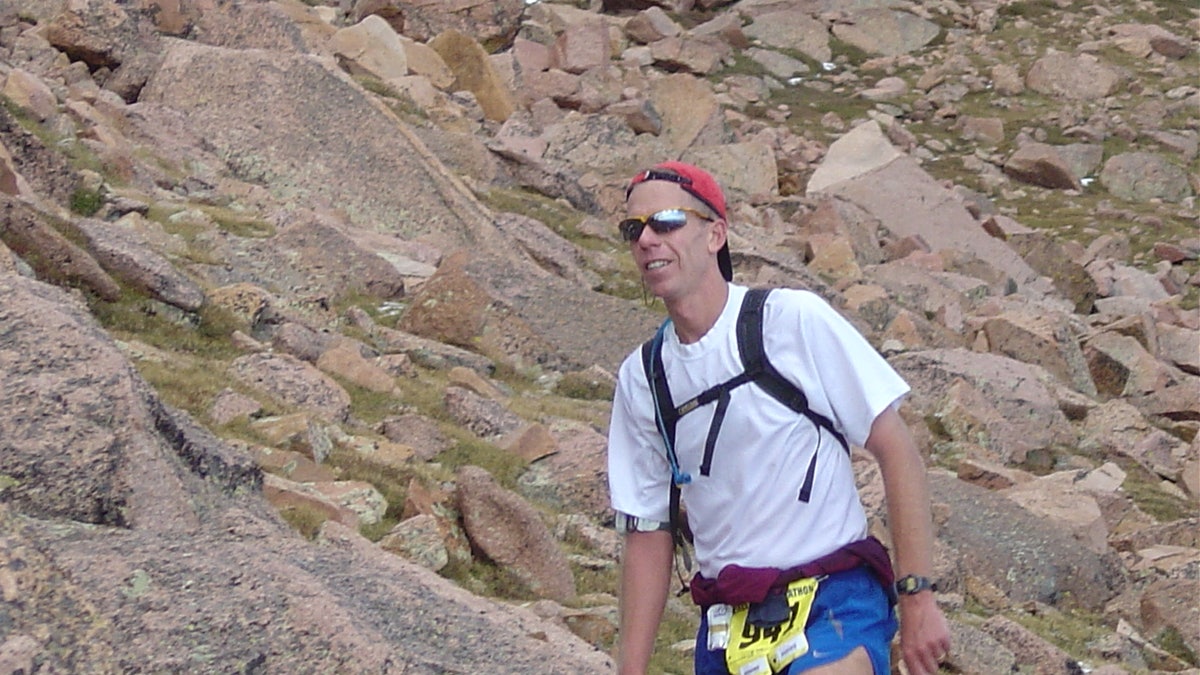Double amputee Afghanistan war veteran runs fourth Boston Marathon
Retired Army Sergeant Stefan LeRoy tells his story of perseverance on 'Fox & Friends.'
This is a story with a beginning but not an end. At least not yet.
I’ve loved long distance running since I was 15-years-old. In the 32 years since, I’ve logged well over 60,000 miles, including 77 marathons and ultramarathons. To me, running is more than exercise. It’s a gift from God.
In recent years, I’ve limited my workouts to early mornings and just one race per year – Colorado's Pikes Peak Marathon.
MASSACHUSETTS WOMAN MISTAKENLY SIGNS UP FOR HALF-MARATHON IN BRITISH CITY WITH SAME NAME AS US CITY
More an endurance event than a traditional footrace, runners begin in the small town of Manitou Springs (elevation 6,300 feet) and ascend to the famed mountain’s summit (14,115 feet), then turn around and run the 13 miles back down Barr Trail.
I completed my 20th consecutive Pikes Peak in August 2018. In May this year, I began increasing my mileage for the annual August race. I soon found myself injured and was diagnosed with a condition called piriformis syndrome, the tightening of a thick muscle in the rear-end, right where the hamstrings connect to the pelvis and where the sciatic nerve passes down into the leg.
CLICK HERE TO SIGN UP FOR OUR OPINION NEWSLETTER
More from Opinion
Treatments had little effect. But runners run and no pain, no gain, so I continued to push through. I ordered new orthotics for my shoes, thinking that might be the culprit. I began an aggressive stretching regimen – and foolishly overstretched to the point of straining my hamstrings.
I was undeterred. I was determined to keep my marathon streak alive.
I became convinced I had Ischial Bursitis – inflammation in the “sits-bone” area of my rear end. My family physician gave me a cortisone shot. The pain persisted.

Paul Batura at Pikes Peak, 2004

Paul Batura running the Pikes Peak Marathon, 2004
In late July, I began seeing a new physical therapist, a wonderful family friend who spent 20 years in the Air Force keeping America's pilots pain-free in the air despite grueling 30 hours flights in cramped cockpits. Scott diagnosed me with a litany of muscular-skeletal issues – the consequences of decades of uneven stretching and a lack of core-strengthening exercises.
The marathon grew closer but the pain remained. Scott urged patience. Three days before the race, he introduced me to two men in the rehabilitation center. They thought they could get me ready to run by using something called “Accelerated Recovery Performance (ARP) Wave neurological therapy.”
ARP therapy is an unconventional electronic stimulation rehab system that forces muscles to contract rapidly, leading your brain and nervous system to alter and correct the movements that caused the trouble in the first place. It’s controversial. The Soviets used it on their athletes before it was perfected, and it burned skin. I didn’t quite understand it all, but in desperation agreed to give it a try.
It’s difficult to explain to how painful the treatment was but just imagine trying to work out injured on a treadmill while someone is shocking you with what seems like high voltage electricity. It buckled my legs and curled my toes.
The treatment left me soaked in sweat and as sore as if I had run a marathon. I’m told injured NFL players and other high-performance athletes use it to great effect, but it didn’t work for me. I was grateful to Scott and the team for trying. To paraphrase the popular breakup line, “It wasn’t them – it was me.”
I wound up withdrawing from the race on Saturday night and spent time on Sunday pondering the streak’s end, wondering why it had meant so much to me, enough that I was willing to undergo painful treatment that felt akin to being electrocuted.
The ordeal reminded me that nothing lasts forever and good things can become ultimate things, obsessions that lead you down desperate roads. Where an alcoholic may hit the bottle, I lace up my shoes and hit the road. A healthier habit, but too much of anything is too much.
I was also confronted with the fact that I’ve allowed running to become too much a part of my identity. I liked the fact that not many people have run the Pikes Peak Marathon 20 times in a row. But injuries can humble you – and now instead of wanting to complete a marathon, I only wish I could run someday run a single mile without stabbing pain.
CLICK HERE TO GET THE FOX NEWS APP
My path forward remains uncertain. An MRI revealed a collapsed disc, among other spinal abnormalities. My therapists are still optimistic – and so am I.
There are plenty of people with far more physical troubles than me. But setbacks often give us time to think and reevaluate – I only wish it didn’t take getting shocked to set me straight.
